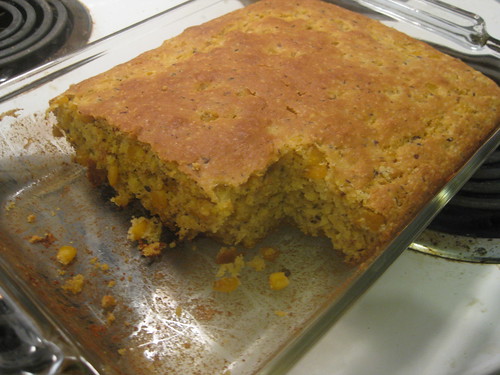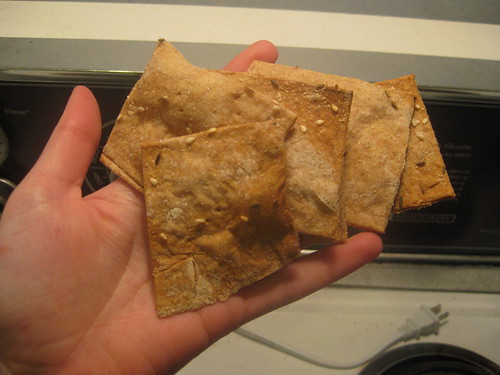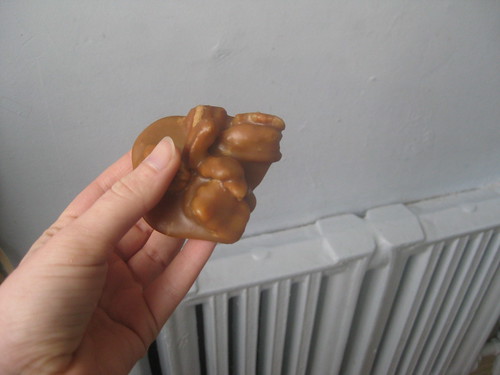
In general I bake a loaf of bread each weekend. Last weekend I began my challenge with Anadama bread, which is a (deceivingly) simple sandwich loaf defined by its inclusion of cornmeal and molasses. Unfortunately mine was a bit of a flop. There were a few issues, ultimately causing it to be too tough and a little bland.
One: Peter Reinhart urges me to use instant yeast rather than active dry yeast. I really dig active dry yeast, but I thought I'd give instant a chance. Instant yeast comes in smaller granules and can be mixed directly into the dry ingredients. You use less of it than you would active dry, and it takes a bit longer to fully activate. The longer activation time, combined with the low temperature of my apartment caused the dough to rise extremely slowly. So slowly (four hours) that I figured it had finished rising. It hadn't!
Two: I paused my cooking to go ice skating and refrigerated the dough after the first rise. When I removed my dough from the fridge, it had formed this dry, crusty shell on the outside. I sprayed it with water and cut a slit in the top, but it was still pretty stiff. This might have prevented the loaf from fully expanding.
SO. This weekend (yesterday), I set out to learn from my mistakes and master Artos bread (Greek celebration bread). The recipe required that I make a starter dough with flour, yeast and water. I was supposed to let it sit for 3-4 hours until foamy and bubbly, then refrigerate overnight. Four hours passed and the mixture looked about the same, so I left it a bit longer. Eventually I forgot about it and went to sleep. This morning I discovered it on my kitchen countertop, gooey and deflated. It had the consistency of glue. Too heartbroken to start again, I decided to skip ahead to the only quick bread in BBA: corn bread.
Here is the recipe on another blog.
This corn bread gains my approval for its inclusion of corn kernels and honey. In the original recipe, Reinhart loads the bread with crispy bacon strips and greases the pan with bacon fat. This sounded a little revolting to me and so I left the bacon out. I also swapped the buttermilk for soy milk and the eggs for ground flax sees and water. I forgot to change the soymilk into butter-soy-milk, so I just added a little lemon juice to the dough in the end. I don't know if it actually had an effect. Reinhart also suggests that I mix the polenta and buttermilk first and leave them overnight to develop the flavors. I wanted some instant gratification after ruining my Artos starter dough, so I skipped this step and made everything together in a few hours.
It turned out GREAT, by the way. Very moist, hearty, a little sweet, and crispy on top. It's not an everyday corn bread, the type I would drizzle honey onto or dip into a bowl of chili. This is more a standalone cornbread, similar to my mom's corn casserole. I see it suited very well for holiday-style potlucks or alongside some veggies for lunch.



